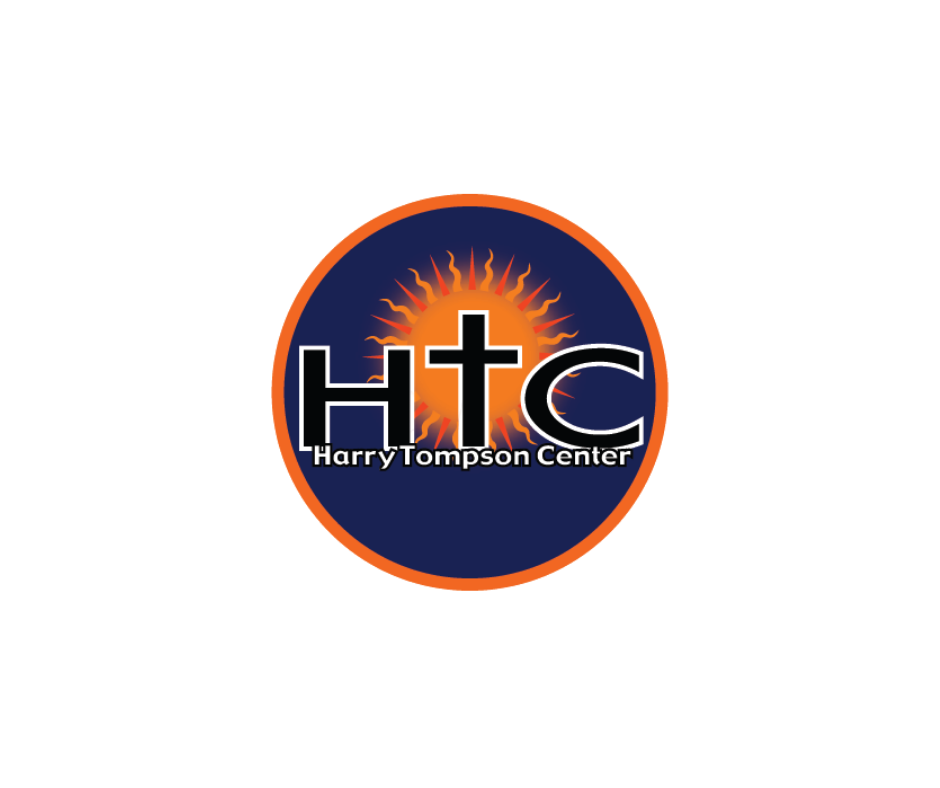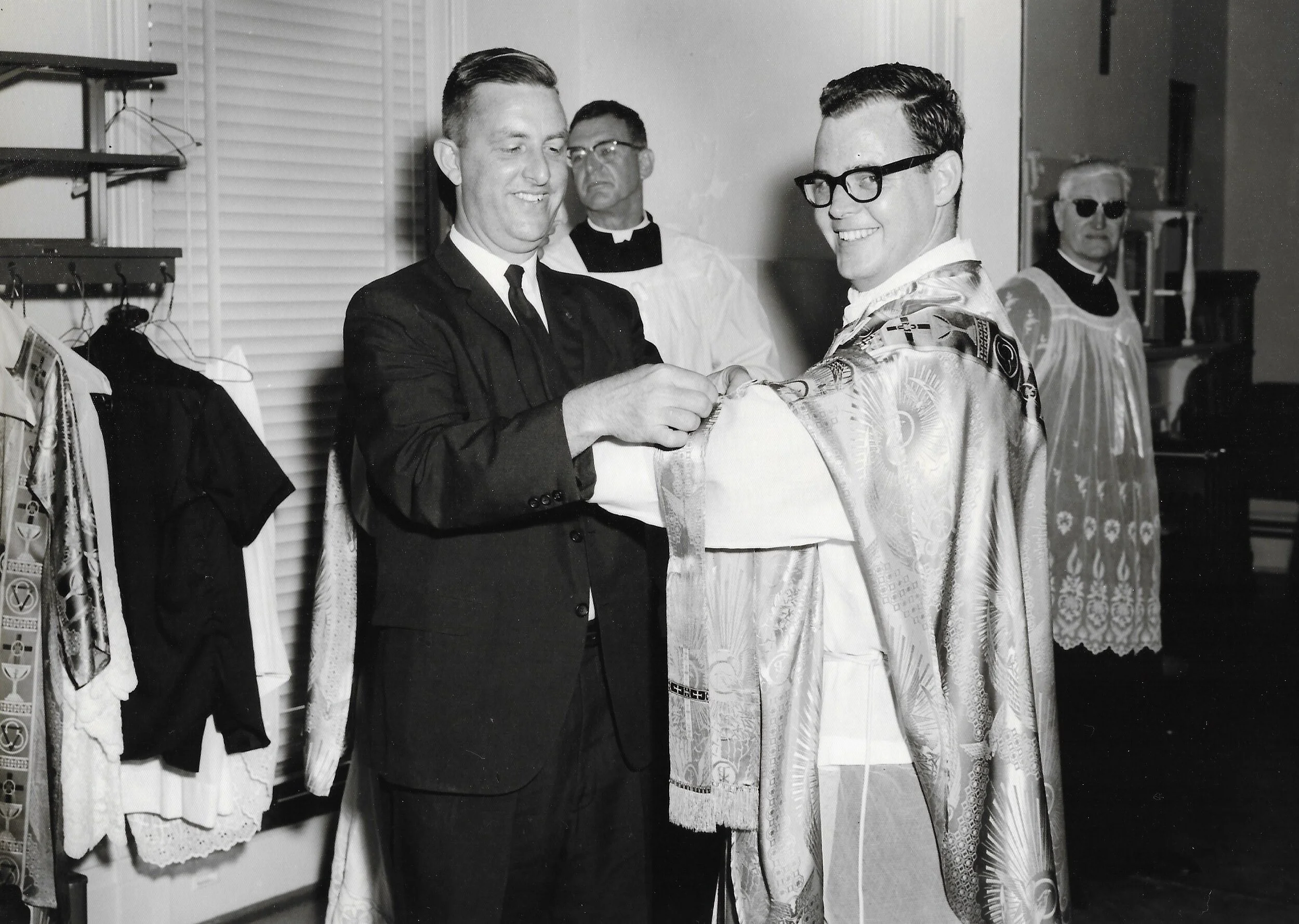Who was Father Harry Tompson?
Excerpt courtesy of A Shepherd for New Orleans: Essays in honor of Rev. Harry W. Tompson, S.J. Edited by Vincent B. Liberto
Harry Tompson was a many-sided man and every side was like an electric battery. He was uninhibited, fearless, and indomitable. He was expansive and confident, boundless and unstoppable. Honorable, strong, prepared.
In 1936, Harry William Tompson was born to Harry Morris Tompson and Jeanne Ray Tompson on July 13. Growing up in Algiers, he attended Holy Name of Mary Elementary School from 1941, during the years of World War II, until 1950. He was taught by Marianites of Holy Cross and at an early age, the sisters could already see some of the endearing qualities that served him well throughout his life. As a schoolboy, he was gracious and generous, cordial and pleasant, helpful and industrious.
As a student at Jesuit High in New Orleans, those who knew him claim he possessed a strain of adolescent shyness. Later, upon graduation, Harry entered the Jesuit Order at St. Charles College in Grand Coteau, Louisiana on July 30, 1954.
Harry often said that the Society of Jesus was a home where his personality was nurtured to grow. The Society of Jesus brought out the best in him. The impact of Jesuit training, he would later say, developed his nature and disposition. The Jesuits drew him out of himself and helped him develop his natural gifts, sensitizing him to the needs of others.
Harry took his first vows as a Jesuit on July 31, 1956, and studied the Classics and humanities for two more years in Grand Coteau, Louisiana. From 1958 until 1961 he studied philosophy and secondary education, obtaining a B.A. at Spring Hill College in Mobile, Alabama.
"Mister" Tompson, as he was known at that time, then taught Latin at Jesuit High School in Shreveport until 1964. He departed for studies to secure a theology degree from St. Louis University and was ordained by Archbishop Philip M. Hannan at Holy Name of Jesus Church in New Orleans on June 7, 1967.
From 1968 until 1970, Father Tompson taught theology and Latin at Jesuit College Preparatory in Dallas and later at Strake Jesuit College Preparatory in Houston, where he became Dean of Students. There, he joined an energetic, youthful administrative team; the principal, president, and dean of students were all Jesuits and all under forty.
When he moved to Jesuit High School in New Orleans in 1974, it is important to note that he had been out of his native, beloved city for twenty years. By 1974, Father Tompson had already built an identity outside of New Orleans. He did not request to come home; rather, he deferentially accepted the direction of his then superior provincial, Father Thomas H. Clancy, S.J.
In his post as principal from 1974 until 1979, Father Tompson made various educational innovations while leading and supporting an already strong faculty to greater expertise in their respective fields. From 1979 until 1987 he was president.
During this time he improved the quality of student life by renovating sections of campus and making physical additions to the school's complex. After serving a year at the Jesuit Seminary and Mission Bureau, an office that raises funds for the education of Jesuit seminarians and projects for Jesuits in international apostolates, he became director of Manresa Retreat House in Convent from 1989 to 1994. From 1994 until his death he was pastor of New Orleans' Immaculate Conception Church in the Central Business District.
In 1997, he successfully renovated the church. Upon completion, he worked to set up structures that would bring favorable economic conditions to neighborhoods that needed it most in New Orleans. This effort culminated in the founding of Good Shepherd School, Café Reconcile, and what would eventually become the Harry Tompson Center.
Father Harry W. Tompson's life ended on Thursday, April 5, 2001, the week before Holy Week. His body lay in state on Sunday evening and Monday and Tuesday of Holy Week. The funeral Mass that took place at Immaculate Conception on Wednesday, April 11, 2001, was itself a civic event, complete with television cameras from every station in New Orleans. One station televised the entire ceremony. Newspaper photographers flooded the already packed church. Galleries on the second level needed to be opened to accommodate the huge assembly. Baronne Street was blocked off and giant speakers piped the message from the podium and altar to suit the extra hundreds who could not get into the church. After the Mass, Father Tompson's body was buried at the Jesuit cemetery at St. Charles College, Grand Coteau, where he earlier began life as a Jesuit.

